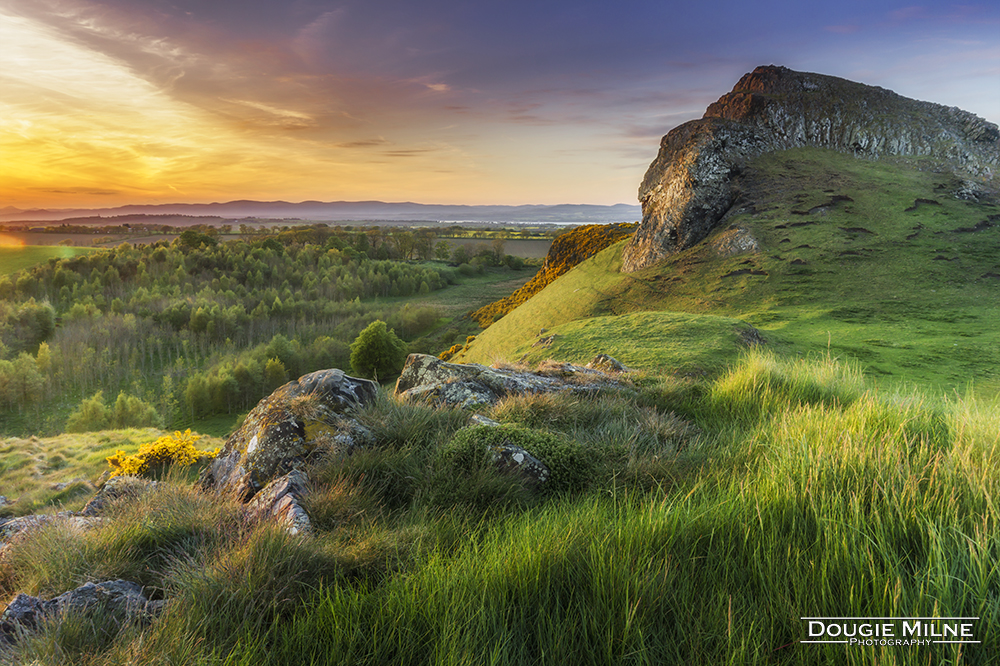
Click on picture for buying options
TweetHeading west out of Edinburgh towards Livingston, it's hard to avoid Binny Craig, the small but prominent hill which juts out of the northern horizon like a huge, rocky fortress.
Closer inspection reveals the distinctive crag-and-tail formation of a volcanic plug hewn out of the ancient Scottish landscape by glaciers creeping eastwards across the central belt some 12,000 years ago. Similar formations can be seen in the crags at Edinburgh and Stirling castles, both of which are to be seen from the summit, some 221 metres above sea level. The panorama also includes Arthur's Seat, Berwick Law, the Forth Bridges, southern Fife and the Ochil hills. Beyond the fires of Grangemouth, the Wallace Monument lies in front of the southern highlands, including Ben Vorlich, Stùc a Chroin, Ben Ledi, Stob Binnean, Ben More and Ben Lomond. And looking south, the Lammermuir Hills, Culter Fell, the Pentlands and Tinto Hill, near Lanark, are all visible.
During the wars of independence, the hill's prominence made it a natural choice to be part of a chain of hilltop beacons stretching from the Cheviots to Stirling to warn of the approach of English armies. Six hundred years or so later, another fire was lit on the summit, as part of nearby Ecclesmachan's celebration of Queen Victoria's Diamond Jubilee in June 1897, and the hill became the backdrop to a huge firework display.
What the local wildlife made of these festivities is unrecorded. Binny Craig is a nesting place for kestrels, as well as buzzards, sparrowhawks, merlin and peregrine falcon. It is also home to badgers, foxes, brown hares, stoats and weasels, and if you are lucky, you may even see a red squirrel. Most obvious of all are the ubiquitous sheep, part of the flock belonging to the Oatridge Campus of Scotland's Rural College. The hill lies within the college grounds.
The rocks of Binny Craig have a bitumous aroma when broken - the result of oil shale in the strata, which also includes marls, sandstones, mudstones and limestones. Binny Quarry, a little to the east of here, was the source of the sandstone used for Edinburgh's Scott Monument when it was being constructed in the 1840s. The stone was taken by horse-drawn cart to the Union Canal at Broxburn, from where it was transported by barge into Edinburgh. Binny Quarry was briefly reopened again in the 1990s to provide stone for the Monument's restoration.
West Lothian's little hill with a big view is a splendid destination for a day out - a quiet country walk with a wow factor.
This picture was taken on 17 May 2018.